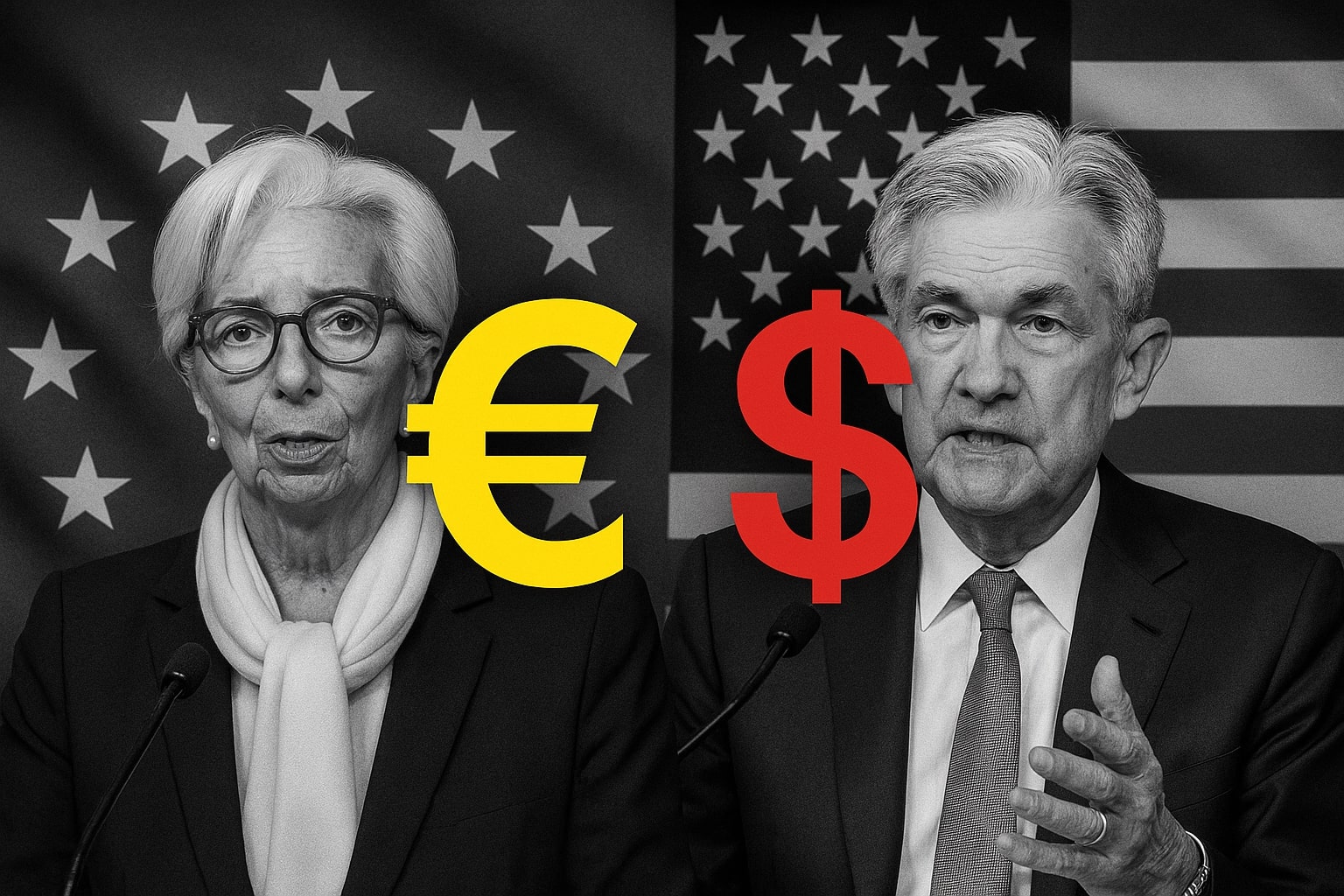
Stock Market Today - Dow Climbs to 46,300 as NVDA, LLY, GAP, WMT Drive Market Rally
Fed rate-cut bets lift S&P 500 (SPX) to 6,603 and Nasdaq (IXIC) to 22,250; Eli Lilly (LLY) hits $1 trillion, Nvidia (NVDA) falls 5.5%, oil slips to $57.71, Bitcoin (BTC-USD) sinks to $83,772 | That's TradingNEWS
Stock Market Today - Market Rebounds As Fed Pivot Bets Drive Late-Week Turnaround
U.S. equities reversed earlier losses on Friday as dovish signals from New York Federal Reserve President John Williams reignited bets for a December rate cut, ending a volatile week that saw tech valuations tested and global sentiment weaken. The Dow Jones Industrial Average (DJIA) climbed 506 points (+1.1%) to 46,300, the S&P 500 (SPX) rose 0.9% to 6,603, and the Nasdaq Composite (IXIC) added 0.6% to 22,250, all recovering from Thursday’s AI-led washout. The Fed’s policy tone shifted as Williams stated that monetary policy remains “modestly restrictive,” leaving room for further adjustment toward neutrality. Market expectations, measured by the CME FedWatch tool, now price in a 73% probability of a 25 bps rate cut in December, sharply higher from 39% the prior day. Treasury yields fell accordingly, with the 10-year yield at 4.07% and the 2-year note at 3.50%, while the U.S. dollar index stood at 100.35, showing mild strength against the euro and yen.
Indices End Lower For The Week Despite Friday Surge
The rally failed to erase the broader losses accumulated during the week. The S&P 500 and Dow each fell roughly 2% week-to-date, while the Nasdaq dropped 3%, marking its steepest weekly loss since April. Thursday’s selloff saw more than 75% of NYSE-listed stocks decline, with down volume accounting for 81% of total market activity, signaling widespread risk aversion. The VIX slipped 5.6% to 24.94 but remains elevated, highlighting persistent investor anxiety over growth and valuations. Global indices reflected similar weakness, with the STOXX 600 (-0.4%), FTSEurofirst 300 (-0.43%), and Nikkei 225 (-2.4%) all closing lower. The MSCI Asia-Pacific Index (-2.8%) recorded one of its sharpest weekly losses of the year as chipmakers TSMC and ASML extended declines.
AI Euphoria Fades As Market Rotates Toward Defensive Leaders
The week’s turning point came after Nvidia (NVDA) delivered blockbuster third-quarter results but triggered a reversal that erased early gains. Despite beating expectations on revenue and profit, NVDA dropped 5.5% week-to-date as investors questioned the sustainability of AI-related capital expenditure. Barclays strategists warned that “monetization of the extraordinary capex boom” remains unclear, citing valuation, cash flow, and leverage as concerns. The rotation away from AI-heavy names hit Microsoft (MSFT) and Amazon (AMZN), both down around 7%, while Alphabet (GOOGL) was the only “Magnificent Seven” component closing positive. The market is transitioning into a “mature phase” of the AI trade, where balance sheets and profitability outweigh hype.
Healthcare Sector Outperforms With Eli Lilly Surging Past $1 Trillion
Healthcare emerged as the month’s clear outperformer, with the S&P 500 Health Care Index up 5% while technology fell 8%. Eli Lilly (LLY) became the first pharmaceutical company in history to hit a $1 trillion market cap, rising to $1,061 intraday before closing near $1,049. Shares are up 36% year-to-date, driven by relentless demand for its weight-loss drugs Mounjaro and Zepbound. Regeneron Pharmaceuticals (REGN) also gained 20% in November. In contrast, Novo Nordisk (NVO) shares fell 45% this year after leadership changes, widening the competitive gap in the obesity drug market. Healthcare stocks’ defensive appeal and earnings resilience have drawn rotation from AI and consumer tech, establishing the sector as the new leadership in late Q4.
Retail And Consumer Earnings Drive Positive Momentum
Several retail names defied market weakness through strong earnings. Gap Inc. (GAP) surged 8% after posting EPS $0.62 vs $0.58 est. and revenue $3.94 billion (+3%). Same-store sales jumped 5%, led by +7% at Gap, +6% at Old Navy, and +4% at Banana Republic, offsetting an 11% drop at Athleta. The company raised its full-year outlook, guiding sales growth to 1.7–2% and operating margin to 7.2%. Intuit (INTU) gained 5% after reporting EPS $3.34 vs $3.09 est. on $3.89 billion in revenue, benefiting from mid-market AI automation demand. Ross Stores (ROST) climbed 8%, exceeding expectations with EPS $1.58 vs $1.41 est. and revenue $5.6 billion, citing robust back-to-school demand. BJ’s Wholesale Club (BJ) advanced 4.5% in premarket after EPS $1.16 beat $1.10 est. and a guidance increase to $4.30–$4.40 per share for the year. In contrast, Elastic (ESTC) dropped 15% despite strong results, with revenue $423 million (+16% Y/Y) as investors punished its slowing growth rate from the prior quarter’s 20%.
Energy Declines On Trump’s Ukraine Peace Push And Falling Oil
Oil extended its slide after President Donald Trump promoted a plan to end the Russia-Ukraine war, erasing geopolitical risk premiums. Brent crude (BZ=F) fell 1.8% to $62.21, and West Texas Intermediate (CL=F) dropped 2.2% to $57.71, both reaching one-month lows. Energy equities lagged, with Chevron (CVX) and Exxon Mobil (XOM) down roughly 1.5%, and the sector facing YTD declines of 16–18%. Gold steadied near $4,070 per ounce (+0.35%), aided by falling yields and a softer dollar, while the S&P GSCI Index Spot (+0.06%) reflected subdued commodity momentum.
Crypto Market Suffers Deepest Pullback Since April
Digital assets endured a sharp selloff, mirroring broader risk-off sentiment. Bitcoin (BTC-USD) dropped 11% week-to-date to $83,772, its lowest since April 11, while Ethereum (ETH-USD) slid 6.4% to $2,693. Liquidations of leveraged positions intensified the downturn, with MicroStrategy (MSTR), Riot Platforms (RIOT), and Galaxy Digital (BRPHF) all down around 2–3%. A record $12 billion inflow into the ProShares UltraPro Short QQQ (SQQQ) signaled a surge in bearish bets against tech stocks, the largest single-day inflow since 2010.
Weak Consumer Sentiment Supports Fed Dovish Outlook
The University of Michigan Consumer Sentiment Index registered 51.0, down 4.9% from October and 29% Y/Y, reflecting persistent pessimism despite the government reopening. The one-year inflation expectation eased to 4.5%, and the five-year outlook fell to 3.4%, its lowest since mid-2023. While sentiment remains historically weak, cooling inflation expectations reinforce the case for a December rate cut. Consumers cited “frustration with high prices and stagnant incomes,” aligning with the Fed’s acknowledgment of labor-market fragility.
Read More
-
CGDV ETF Outpaces S&P 500 With $24.5 B AUM and 21% Total Return
20.11.2025 · TradingNEWS ArchiveStocks
-
Bitcoin Price Forecast - Bitcoin (BTC-USD) Plunges 34% to $80,553 as Margin Calls and Fed Uncertainty Trigger Crypto Meltdown
21.11.2025 · TradingNEWS ArchiveCrypto
-
Gold Price Forecast - XAU/USD Drops to $4,025 as Fed Hawkish Tone and Strong Jobs Data Drive Dollar Higher
21.11.2025 · TradingNEWS ArchiveCommodities
-
EUR/USD Price Forecast - Euro to Dollar Drops to 1.1500 as U.S. PMI Surge and Fed Signals Hit Euro Momentum
21.11.2025 · TradingNEWS ArchiveForex
Tariffs, Trade, And Global Positioning
President Trump’s decision to roll back 40% tariffs on Brazilian agricultural products eased inflation pressure but introduced fresh policy uncertainty ahead of 2026. Earlier auto tariffs prompted 36% of U.S. car buyers to accelerate purchases this year, while 15% paid higher prices, per J.D. Power data. The auto sector now faces slower H1 2026 demand after the pull-forward effect. Globally, BofA’s Fund Manager Survey found 42% of institutions expect international equities to outperform U.S. stocks next year, compared to 22% still favoring the U.S., reflecting rotation into undervalued markets after the AI correction.
Technical Structure And Market Bias
Technical indicators show near-term stabilization. The S&P 500 faces resistance near 6,660 and support around 6,510, while the Nasdaq Composite oscillates between 21,950–22,350. The Dow Jones Industrial Average finds short-term support near 45,800. The Russell 2000 (RUT) rose 2.0% to 2,351, signaling small-cap recovery driven by lower rate expectations. Breadth data—82% declining vs 18% advancing volume Thursday—indicates capitulation typical before relief rallies.
Buy / Sell / Hold Outlook
The week’s movements show a market transitioning from speculative AI-driven leadership to earnings-based defensives. AI megacaps (NVDA, MSFT, AMZN) remain pressured—Hold short-term, neutral bias. Healthcare and retail (LLY, REGN, WMT, GAP) show leadership—Buy. Energy (CVX, XOM, CL=F) and crypto (BTC-USD, ETH-USD) exhibit structural weakness—Sell. Indices bias: Nasdaq – Hold (volatile), S&P 500 – Buy on dips, Dow Jones – Buy short-term momentum, Bitcoin – Sell (downtrend intact), Oil – Sell (below $58 support), Eli Lilly (LLY) – Buy (earnings leadership), Nvidia (NVDA) – Hold (valuation reset phase).
Overall, U.S. equities show short-term bullish recovery potential within a medium-term consolidation range, with positioning favoring defensives and rate-sensitive sectors as markets await the December Fed pivot.



















